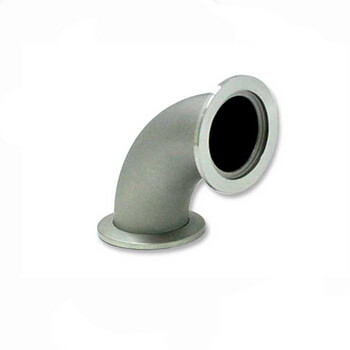Exploring the Precision World of Conflat Vacuum Flange Systems
Introduction: The Heart of High-Vacuum Technology
In the world of vacuum systems, reliability and precision are paramount. Whether used in particle physics laboratories, semiconductor fabrication, or space simulation chambers, every component must contribute to maintaining a sealed and stable vacuum environment. Among these components, the Conflat Vacuum Flange stands as a trusted standard for high and ultra-high vacuum applications, offering superior sealing capabilities. Equally vital is the Vacuum Gate Valve Design, which controls the flow and isolation within complex vacuum networks. Together, these elements form the backbone of modern vacuum engineering, enabling some of the most advanced technological breakthroughs.
Understanding the Conflat Vacuum Flange
The Conflat Vacuum Flange—often referred to simply as a CF flange—is a staple in environments that require ultra-high vacuum conditions. Made typically from stainless steel, this flange type utilizes a knife-edge sealing mechanism that compresses a soft metal gasket, usually copper, to create a leak-tight, permanent seal. This metal-to-metal seal makes CF flanges ideal for systems where elastomer seals would outgas or degrade under extreme vacuum or thermal conditions.
The unique sealing principle behind the Conflat flange allows it to maintain integrity across a wide temperature range. This feature is especially valuable in high-vacuum environments where thermal cycling is common, such as in cryogenics or plasma research. The repeatability and long-term stability of CF flanges ensure that once a vacuum seal is achieved, it remains intact for extended periods, even under the most challenging conditions.
Importance of a Reliable Vacuum Seal
The quality of a vacuum system is only as good as the seal that holds it together. A single compromised connection can result in gas leakage, contamination, or even system failure. The Conflat Vacuum Flange plays a crucial role here by offering unmatched sealing performance. Unlike elastomer-based flanges that may suffer from aging, off-gassing, or temperature sensitivity, CF flanges maintain structural and chemical integrity over time.
In sensitive operations like mass spectrometry or electron microscopy, where even molecular-level contamination can affect results, the reliability of the seal cannot be overstated. The Conflat system ensures that the vacuum environment remains pure, controlled, and isolated from external influence. Its proven performance has made it the preferred choice for scientific and industrial vacuum systems worldwide.
Vacuum Gate Valve Design: Function Meets Innovation
Just as flanges are vital for sealing, valves are critical for control. The Vacuum Gate Valve Design plays an essential role in regulating the flow of gases or maintaining vacuum integrity during system maintenance or segmentation. These valves are engineered to operate within a sealed vacuum environment without introducing contaminants or disruptions.
Gate valves function by moving a gate or blade vertically between two seats to block or allow flow. In vacuum systems, the challenge is not just to stop flow but to do so without leaks, outgassing, or mechanical wear that might compromise the vacuum level. The design often incorporates metal seals, clean-motion mechanisms, and low-particulate components to ensure compatibility with ultra-clean vacuum environments.
Advanced Vacuum Gate Valve Design considerations also include minimizing dead space, optimizing conductance, and ensuring reliable actuation through manual, pneumatic, or motorized systems. In many cases, these valves must perform tens of thousands of cycles without failure, making material choice, geometry, and sealing strategy absolutely critical.
The Synergy Between Flanges and Valves
While the Conflat Vacuum Flange ensures the integrity of the connections, the Vacuum Gate Valve Design enables control and flexibility within that environment. Together, they form a seamless unit that supports everything from rapid testing to long-term experimentation. For instance, in a vacuum deposition chamber, CF flanges might be used to mount viewports or feedthroughs, while gate valves manage chamber isolation during material loading or unloading.
This synergy allows engineers and scientists to build modular systems—structures that can be customized, extended, or repaired with minimal disruption to the vacuum conditions. The standardized dimensions and compatibility of CF flanges make them easy to integrate with gate valves, turbo pumps, and measurement equipment. This modularity saves time and cost while maximizing system performance.
Challenges and Evolving Technologies
Though time-tested, both the Conflat Vacuum Flange and Vacuum Gate Valve Design continue to evolve to meet the demands of new applications. One ongoing challenge is miniaturization: as devices become smaller, the vacuum systems supporting them must follow suit. Manufacturers are responding with compact CF flanges and micro-scale gate valves that offer the same reliability in smaller packages.
Another challenge lies in automation and remote operation, especially in harsh or hazardous environments. Advanced valve designs now incorporate sensors, real-time monitoring, and integration with digital control systems to support autonomous vacuum operation. Similarly, improvements in surface treatments and alloy compositions are extending the life and performance of CF flanges in corrosive or high-radiation environments.
Conclusion: Precision Components for a Vacuum-Driven Future
In the pursuit of scientific discovery and industrial precision, the components we often overlook are the ones doing the heaviest lifting. The Conflat Vacuum Flange ensures leak-tight performance in some of the harshest environments known to science, while the Vacuum Gate Valve Design enables dynamic control without compromising the system's integrity. Together, they empower researchers and engineers to operate within ultra-clean, stable vacuum environments that make high-precision processes possible.
As vacuum technology continues to expand into new frontiers—from space exploration to nanofabrication—the importance of these components will only grow. Their enduring reliability, adaptability, and performance make them indispensable tools in the evolving world of high-vacuum engineering.
For more infoL:-


Comments
Post a Comment